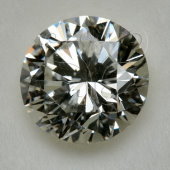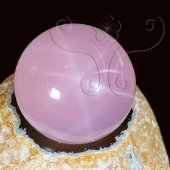|
Common Methods of Gemstone Authentication |
|
 Since most precious stones are small in size, in order to better observe the imperfections such as inclusions and fractures on the gemstones, microscopes and magnifying glasses are employed. A microscope with 10X or 20X magnifications is usually used to observe the gemstones; for more detailed observations, magnification up to 70X can be used. ...... Since most precious stones are small in size, in order to better observe the imperfections such as inclusions and fractures on the gemstones, microscopes and magnifying glasses are employed. A microscope with 10X or 20X magnifications is usually used to observe the gemstones; for more detailed observations, magnification up to 70X can be used. ......
|
|
Read more...
|
|
 This type of jewelry cut is suitable for gemstones that have a high refractive index, good chromatic dispersion and transparent, such as diamonds. A standard round brilliant cut has 58 facets: 32 on the crown and 24 on the pavilion, plus the table and girdle. This type of cut is usually round-shaped, but ...... This type of jewelry cut is suitable for gemstones that have a high refractive index, good chromatic dispersion and transparent, such as diamonds. A standard round brilliant cut has 58 facets: 32 on the crown and 24 on the pavilion, plus the table and girdle. This type of cut is usually round-shaped, but ......
|
|
Read more...
|
|
Gemstone Grading: the 4Cs |
|
 Since most precious stones are rare and highly desirable, their market values are determined by a set of evaluation criteria known as the 4C – Carat, Clarity, Color and Cut. This system is used mainly to rigorously grade and determine the pricing of diamonds on the international market, but can also be applied to the grading values of other colored gemstones. ...... Since most precious stones are rare and highly desirable, their market values are determined by a set of evaluation criteria known as the 4C – Carat, Clarity, Color and Cut. This system is used mainly to rigorously grade and determine the pricing of diamonds on the international market, but can also be applied to the grading values of other colored gemstones. ......
|
|
Read more...
|
|
 Diamond is the hardest known mineral on Earth. Its name means “hardest” in Arabic. Its main constituent is carbon, and may sometimes contain trace amounts of silicon, aluminum, calcium, magnesium, iron, nitrogen or boron. Diamond belongs to the isometric crystal family, and its crystal habit is octahedral. Diamonds of high purity is ...... Diamond is the hardest known mineral on Earth. Its name means “hardest” in Arabic. Its main constituent is carbon, and may sometimes contain trace amounts of silicon, aluminum, calcium, magnesium, iron, nitrogen or boron. Diamond belongs to the isometric crystal family, and its crystal habit is octahedral. Diamonds of high purity is ......
|
|
Read more...
|
|
Physical Properties of Gemstones |
|
 The atomic structures of gemstones are similar to their mineral origin, in that their atomic components are arranged in specific patterns, or crystal structures. There are 6 main families or systems of crystallographic configurations ...... The atomic structures of gemstones are similar to their mineral origin, in that their atomic components are arranged in specific patterns, or crystal structures. There are 6 main families or systems of crystallographic configurations ......
|
|
Read more...
|
|
|
Types of gemstone deposits |
|
 Placer deposits are valuable minerals that have been weathered and broken down into sand gravel, and accumulate on river banks or beaches due to their higher specific gravity content. These deposits are the result of gravity separation of minerals carried in rivers or streams, and are produced during sedimentation. ...... Placer deposits are valuable minerals that have been weathered and broken down into sand gravel, and accumulate on river banks or beaches due to their higher specific gravity content. These deposits are the result of gravity separation of minerals carried in rivers or streams, and are produced during sedimentation. ......
|
|
Read more...
|
|
|
<< Start < Prev 1 2 3 4 5 6 7 8 9 10 Next > End >>
|
|
Page 5 of 11 |